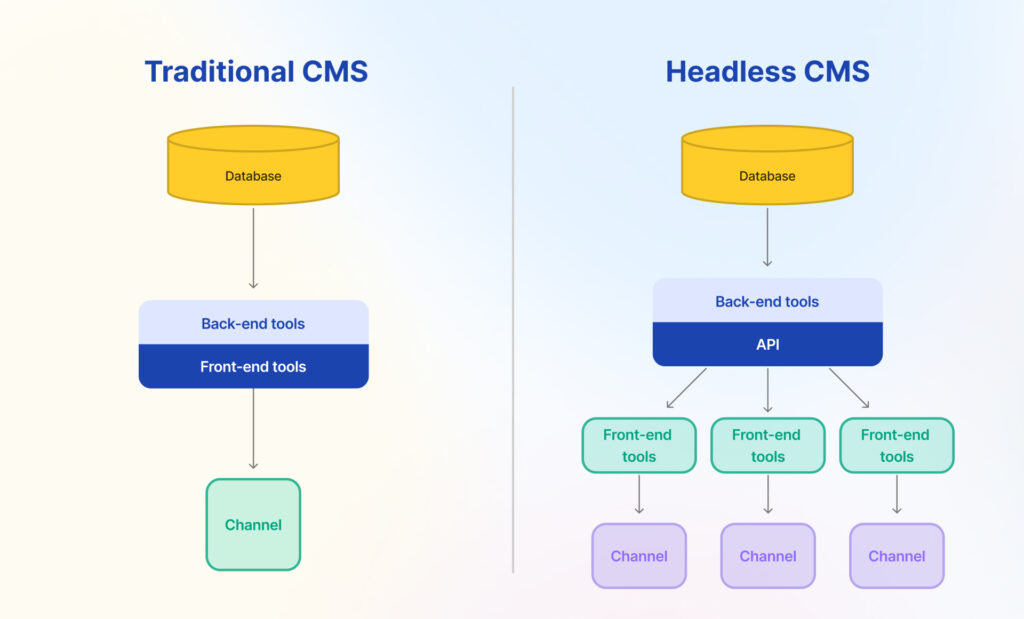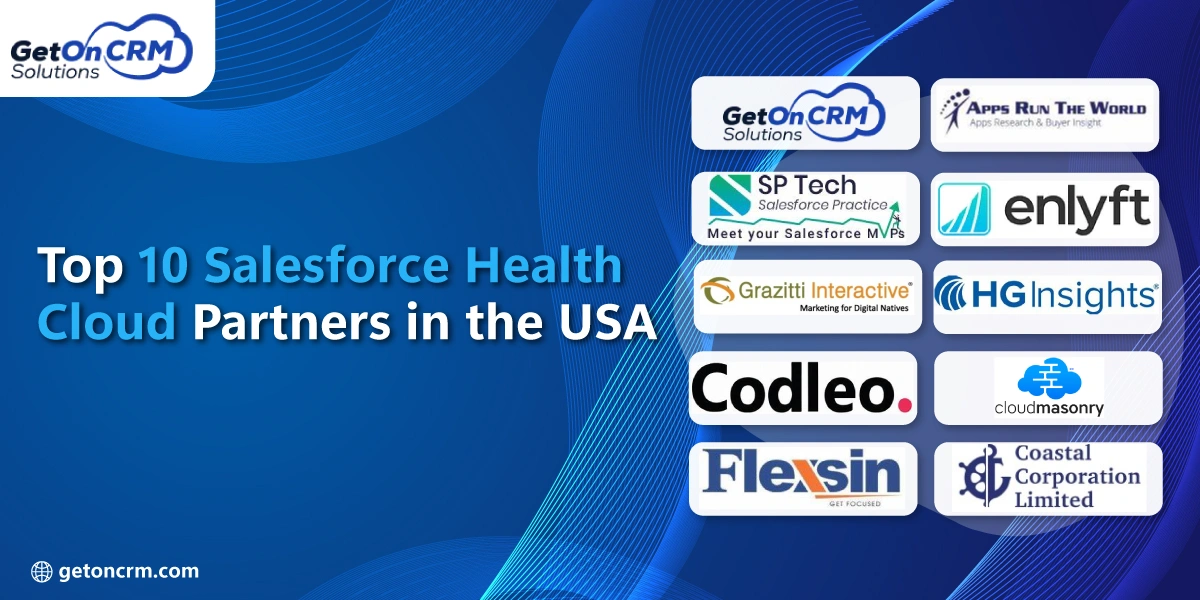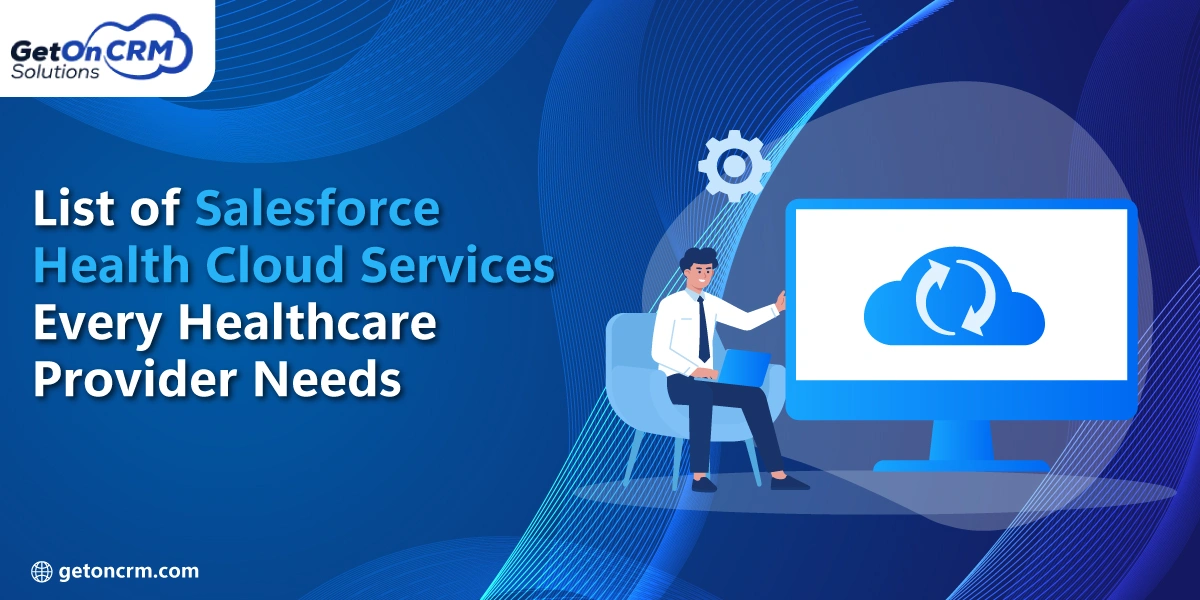Headless Commerce is a transformational architectural concept that combines technical prowess and business flexibility. Unlike traditional e-commerce systems, Headless Commerce separates the frontend presentation layer from the backend commerce engine, giving firms unprecedented flexibility and customization possibilities.
It is based on an API-first architecture, allowing seamless communication between frontend and backend systems using protocols such as GraphQL and REST. This separation will enable developers to create immersive and unique user experiences without being limited by backend functionality.
Comparative Analysis of Traditional and Headless E-Commerce Architectures

Tightly linked architectures are the product of traditional e-commerce systems, which usually combine the Backend server-side code with the frontend user interface. On the other hand, Headless commerce keeps the frontend and Backend separate to function separately.
More flexibility and customization are made possible by this decoupling since developers can alter the user experience without affecting the functionality of the Backend by selecting the best frontend technology stack. Also, headless architecture expedites development and maintenance procedures, enhances speed and performance, and supports omnichannel experiences.
Foundations of Headless Commerce Technological Architecture
The foundation of headless commerce is an API-first strategy that facilitates smooth data transfer between frontend and backend systems. Frontend applications depend on APIs like GraphQL and REST to facilitate communication and provide business logic.
Headless commerce may be made even more scalable and agile with the help of Backend as a Service (BaaS) platforms, which offer pre-built features for handling product data, pricing, inventory, and order processing.
Salesforce Commerce Cloud and Headless Commerce
To effectively illustrate the impact of headless commerce with Salesforce Commerce Cloud, consider a case study of a retail company. This company transitioned to a headless commerce architecture, leveraging Salesforce Commerce Cloud. The transition enabled them to handle increased web traffic during sales events without compromising site performance. APIs facilitated seamless integration with various marketing tools, improving the personalization of customer journeys and resulting in a 20% increase in conversion rates.
Implementing Headless Commerce with Commerce Cloud
With the help of Salesforce Commerce Cloud’s extensive array of headless commerce features, companies can create unique portals and provide individualized shopping experiences. Developers can access a variety of customization choices and development tools, such as APIs, SDKs, and integration frameworks, by utilizing Commerce Cloud’s headless design.
The Commerce Cloud’s capabilities are further improved by its smooth interface with other systems, like marketing automation platforms, CRM, and ERP. It allows organizations to offer their consumers unified omnichannel experiences.
Advanced Techniques and Strategies for Maximizing Performance in Headless Commerce Implementation
Headless commerce requires meticulous preparation and execution to be implemented successfully. A staged strategy can assist in reducing risks and guarantee an effortless transition to the new architecture, beginning with a pilot project or MVP (Minimum Viable Product).
Comprehensive API documentation, automated testing, and continuous monitoring are essential for maintaining the stability and performance of headless commerce applications. Additionally, ongoing optimization efforts based on data-driven insights and customer feedback are critical for maximizing the business impact of headless commerce.
Businesses can choose from various choices while implementing a headless commerce system, each customized to meet unique requirements and tastes.
Rather than having a simple binary decision between starting from scratch and purchasing something prefabricated, the reality is more often a more complex process incorporating aspects of both approaches.
Here are a few ways to put this system into practice:
- Off-the-Shelf Headless Platform:
Companies can purchase pre-made headless commerce systems with pre-built backend features, APIs, and frontend framework interfaces.
These platforms offer a turnkey solution, saving time and resources compared to starting from scratch. They provide a solid basis to quickly and effectively initiate a headless commerce project.
- Build Your Headless Platform:
Building a headless platform from scratch may be the preferred route for organizations with highly skilled development and IT teams seeking complete control over functionality, data structure, and performance.
This approach allows for total customization and flexibility, enabling businesses to customize the platform precisely to their unique requirements. While it demands significant investment in time and resources, it provides unmatched autonomy and scalability.
- Hybrid Approach:
To balance convenience and customization, a hybrid method blends components of off-the-shelf solutions with custom creation. Businesses can use pre-built components for some functionalities and create custom solutions for other purposes.
This strategy gives development teams the ability to keep control over essential platform features while, when needed, utilizing outside knowledge and resources. It provides a reasonable balance between flexibility, cost-effectiveness, and speed.
- Vendor-Provided Headless Templates:
To speed up the implementation of headless experiences, several providers, like Commerce Cloud, provide ready-to-use templates. With the help of these templates, which offer code samples, functional QA frameworks, and architectural guidance, enterprises can quickly launch their headless commerce projects.
They offer a strong base for additional customization and development and encompass various applications, including web marketplaces, progressive web applications (PWAs), and native mobile apps.
Also Read: Retail’s Big Leap Forward With Generative AI And Enhanced CX
Customer-centric Impacts of Headless Commerce Implementation
Considering headless commerce’s customer-centric benefits, consider how a company used this approach to offer more engaging and personalized experiences. After adopting headless commerce, the company could quickly launch new marketing campaigns and adapt its user interface to reflect customer feedback, leading to a 30% improvement in customer engagement metrics. The flexibility of headless commerce allowed for faster content updates and feature enhancements, directly contributing to a more dynamic and responsive online presence.
The best implementation strategy will depend on several variables, including the need for scalability, budgetary limits, technical know-how, and business requirements. Each of these strategies has unique benefits and considerations.
With confidence and efficiency, enterprises may start their headless commerce journey by carefully weighing these considerations and choosing the best approach.
Headless commerce modifies how organizations connect with customers by enabling companies to adjust quickly to changing consumer preferences and provide highly personalized interactions.
Customers benefit from the newest designs and promotions in real time, with fast updates reflecting the launch of fresh content. Moreover, smooth shopping experiences are guaranteed even during periods of high visitor volume due to increased site speed and scalability, which raises customer satisfaction levels.
Additionally, the smooth integration of omni-channel capabilities enables consistent experiences across all touchpoints, precisely catering to the varied needs of contemporary consumers.
How to Get Started with Headless Commerce?
Starting a headless commerce journey requires developers and designers to work together effortlessly while respecting their different skill sets. An effective headless commerce platform provides extensive developer tools and APIs, allowing developers to use unified data sources to create unified, brand-centric experiences across many channels.
At the same time, creative teams focus on improving user experiences and interfaces to increase consumer engagement and conversion rates. Developers are empowered with rapid development capabilities and total control over tools, code, APIs, and third-party connections due to the inherent flexibility of a dependable, headless platform.
The Significance of Reliable Partnership
Overcoming the challenges of effectively implementing headless commerce requires a reliable relationship. Working closely with experienced providers or development teams creates a standard knowledge of objectives, guarantees strategy alignment, and eases the integration of solutions, all of which contribute to success and maximize business effect.
Ultimately, partnering with GetonCRM ensures businesses can access a trusted ally committed to delivering customized headless commerce solutions.
Also Read: 7 Ways Salesforce’s AI Is Crafting The Future Of E-Commerce Business
Conclusion
The transition to headless commerce signifies a tactical change in how businesses tackle online sales, allowing them to maintain an advantage in an increasingly competitive sector by providing unmatched customer experiences customized to changing consumer tastes.
By adopting headless commerce and carefully considering the best implementation approach, companies can seize new opportunities for expansion, creativity, and client delight in the digital age.
Frequently Asked Questions on Headless Commerce Evolution and Implementation
What is headless commerce?
Headless commerce separates the front-end shopping experience from the back-end system. This allows businesses to deliver faster, flexible, and personalized online experiences across devices.
Why are companies adopting headless commerce?
Headless commerce offers speed, flexibility, and scalability. It allows retailers to innovate quickly, improve customer experiences, and adapt to new sales channels without disrupting backend systems.
Does headless commerce improve website performance?
Yes. With decoupled architecture, websites load faster and handle more traffic efficiently. This results in better customer experiences and higher conversion rates.
Can headless commerce integrate with existing systems?
Absolutely. Headless commerce platforms connect seamlessly with CRMs, ERPs, and marketing tools, enabling businesses to maintain existing operations while enhancing customer-facing experiences.
Is headless commerce cost-effective for small retailers?
Yes. Though initial setup requires investment, headless commerce reduces long-term costs by providing flexibility, reducing dependency on single platforms, and allowing businesses to scale affordably.



















